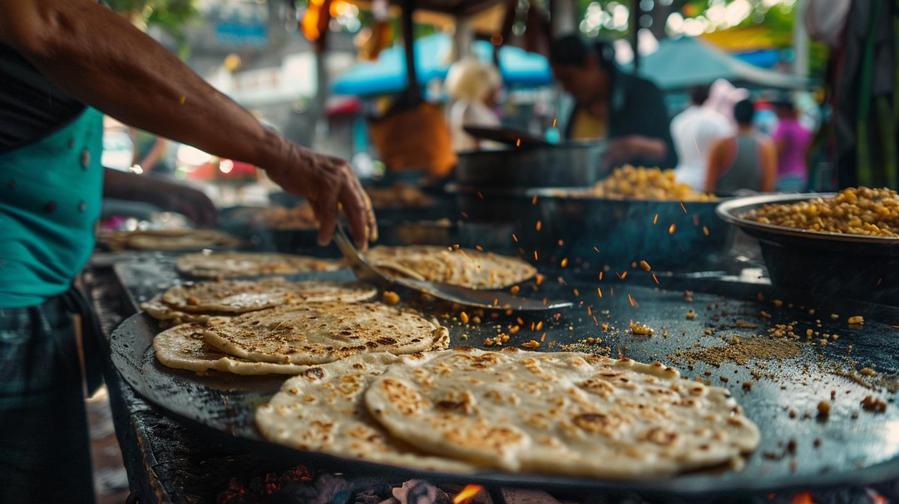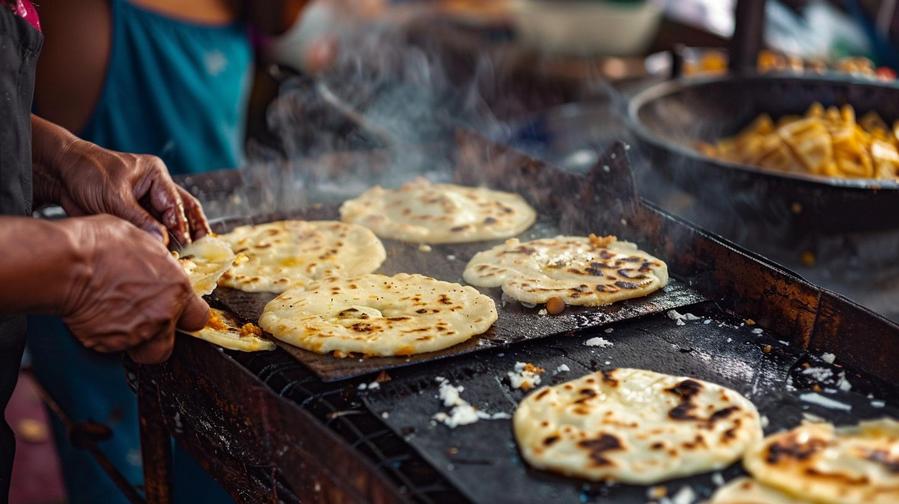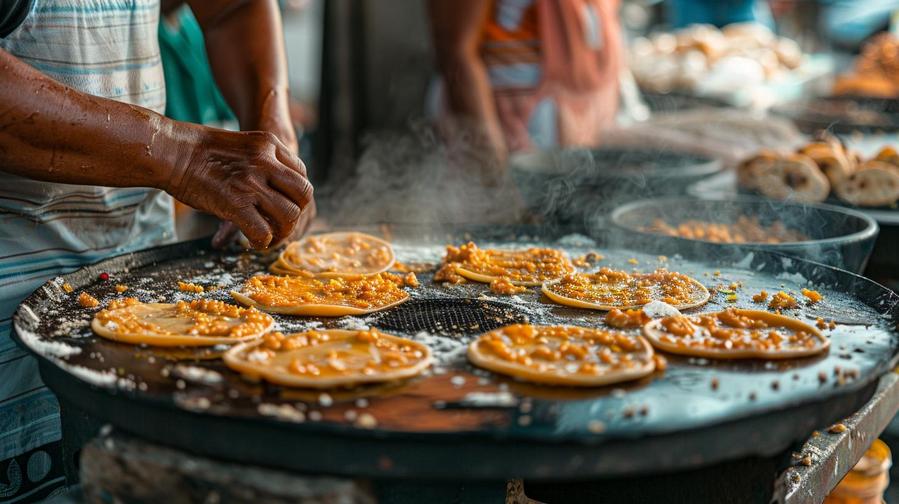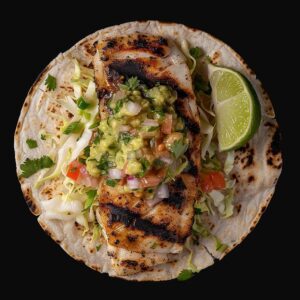Ever wondered where those scrumptious pupusas originated? Dive into El Salvador's culinary heart with us as we explore the roots of its staple dish. From humble home kitchens to bustling street stalls, we'll unravel the history and cultural significance of pupusas, promising a tasty journey. So, all Latin food enthusiasts, tighten your apron strings and get ready to delve into the delicious world of pupusas!
TL;DR:
- Pupusas are thick griddle cakes from El Salvador and Honduras. They are made using cornmeal or rice flour dough filled with ingredients like cheese, chicharrón, squash, and refried beans.
- Pupusas have a rich history and are claimed by both El Salvador and Honduras. They were introduced to other countries through Salvadoran migration and are especially popular in cities with large Salvadoran communities in the United States.
- Pupusas have been adapted by different countries with unique ingredients, while still retaining the traditional Salvadoran cooking process.
- Pupusas play a significant role in Salvadoran culture and economy. They are not just a popular dish, but also a symbol of national pride and community bonding.

What exactly is a Pupusa and how is it made?
As a culinary maestro and a lover of Latin cuisine, let me introduce you to pupusas. These thick, griddle cakes hail from El Salvador and Honduras. They are a truly delightful dish, made using cornmeal or rice flour.
What are the key ingredients of a typical Pupusa?
The primary ingredients used to make a pupusa are cornmeal or rice flour dough. This dough is then filled with a variety of ingredients. Cheese, chicharrón, squash, and refried beans are among the popular fillings. Variety is essential in the pupusa world, with different fillings reflecting regional tastes and traditions.
How is the cooking process of a Pupusa carried out?
The cooking process is straightforward yet intricate. After the dough is prepared, it's filled with the chosen ingredients. The filled dough is then shaped into a disc and cooked on a griddle. The result is a warm, crispy-on-the-outside, soft-on-the-inside delight that's usually accompanied by curtido (a type of slaw) and tomato salsa. Whether at home, a street stall, cafe, or restaurant, making and consuming pupusas is a communal activity. It's an essential part of Salvadoran culture and identity, making it a dish that's more than just a meal. It's an experience.
What's the Historical Backdrop of the Pupusa?
Pupusas, the hefty griddle cakes from El Salvador, have a rich history. The origin of the term "pupusa" is shrouded in mystery, with diverse theories on its etymology. Both El Salvador and Honduras stake their claim as the birthplace of this delicious dish, but the proof remains elusive.
From Where Did the Pupusa Originate?
Pupusas can trace their roots back to the Pipil tribes in El Salvador. Before gaining popularity in El Salvador, pupusas were documented in Guatemala, Nicaragua, and Honduras. The 1980s saw the spread of pupusas to other countries, including the United States, Canada, and Australia, due to the migration of Salvadorans fleeing the Civil War.
What Does History Reveal About Pupusas?
In El Salvador, pupusas hold the esteemed title of the national dish. The country celebrates National Pupusas Day every second Sunday of November with a grand fair. The love for pupusas has even led to attempts at creating the world's largest pupusa, with the record currently standing at a whopping 4.5 meters in diameter!
The United States has also embraced the pupusa, especially in cities with substantial Salvadoran populations like Los Angeles, New York, and Washington, D.C. These griddle cakes play a significant role in the Salvadoran economy, providing income and employment for many, particularly women.
Pupusas come in an array of types, with fillings and variations reflecting regional tastes and traditions. Whether made at home or sold at street stalls, cafes, or restaurants, pupusas are a communal activity and a crucial element of Salvadoran culture and identity.
In conclusion, the history of pupusas in El Salvador and their journey to popularity worldwide is as diverse and rich as their fillings. And while their exact origin might remain a mystery, one thing is certain – the love for pupusas is universal.

Where can one find authentic Pupusas?
If you're seeking the authentic taste of pupusas, El Salvador is your best bet. Here, pupusas are as common as hamburgers are in America. From bustling city markets to quiet rural kitchens, they're a staple that's enjoyed everywhere.
Where are Pupusas commonly found in El Salvador?
In El Salvador, pupusas are everywhere. You'll find them at street vendors, in cafés, and even in high-end restaurants. And every second Sunday of November, there's a national celebration: Pupusa Day. It's an entire festival dedicated to this beloved dish!
But if you're not in El Salvador, don't worry. You can still get your hands on this delicious dish.
Where to find the best Pupusas in America?
In America, pupusas have found a home in cities with significant Salvadoran populations. Los Angeles, New York, and Washington D.C. are top spots. Many Salvadoran restaurants here offer pupusas on their menu. A simple "pupusas near me" online search could lead you to your local pupusa spot.
Remember, the best pupusa restaurants are often those that keep tradition at heart. They're the places where the pupusas are hand-made, filled with love, and served warm with the traditional curtido and tomato salsa.
Whether you're in El Salvador or America, the journey to finding authentic pupusas is an adventure in itself. One that's filled with delicious discoveries and a deeper understanding of Salvadoran culture.
How have Pupusas been adapted around the world?
The beauty of food is its knack for adaptation. Pupusas, hailing from El Salvador, are no exception. As they've sailed across borders, chefs and home cooks alike have put their unique spins on these delightful cornmeal patties.
Let's explore these global pupusa variations. In the US, for example, fusion food trends have led to the creation of unconventional pupusa fillings. Think spicy jalapenos or even mac and cheese! Down under in Australia, seafood often finds its way into pupusas, reflecting the country's abundant coastline.
But it's not just about the fillings. The very form of the pupusa has been subject to change. Enter the pupusa vs arepa comparison. Originating from Venezuela, arepas are cornmeal patties much like pupusas. The key difference? Their fillings are added after cooking, whereas pupusas are stuffed before hitting the griddle.
And what about gorditas? These Mexican treats are also similar to pupusas. The main difference between pupusas and gorditas is their thickness. Gorditas are generally thicker and are split open to add the fillings.
In essence, the journey of the pupusa is a testament to the power of culinary adaptation. Despite these variations, the traditional Salvadoran pupusa remains a beloved dish worldwide, proof that some classics are indeed timeless.

What Role Does the Pupusa Play in Salvadoran Culture?
Pupusas hold a prime spot in Salvadoran culture. They're not just food, they're a symbol of national pride.
How Popular are Pupusas in El Salvador?
In El Salvador, pupusas are not just a dish, they're a way of life. Streets teem with vendors selling these delicious flatbreads. Their popularity is so vast that El Salvador even celebrates a National Pupusas Day every second Sunday of November.
Pupusa festivals are a sight to behold. During these events, communities come together to enjoy this traditional Salvadoran dish. They offer a glimpse into the rich tapestry of El Salvadoran cuisine. You can find a variety of pupusas from cheese, squash, to even refried beans.
What Importance Does the Pupusa Hold in Salvadoran Culture?
Pupusas are a cornerstone of Salvadoran culture. They represent Salvadoran resilience and ingenuity. The simple act of making and eating pupusas is a communal activity that strengthens bonds within families and communities.
In the broader scope, pupusas play a significant role in the Salvadoran economy. They provide employment and income for many Salvadorans, particularly women.
From being the national dish to powering the economy, the importance of pupusas in Salvadoran culture is undeniable. They are much more than a meal; they are a testament of the vibrant and resilient Salvadoran spirit.
In this blog post, we dove into the world of pupusas, a staple of Salvadoran cuisine. We explored their rich history, various types, and the cultural significance they hold. Whether you're trying them at home or at a local Salvadoran restaurant, pupusas offer a taste of El Salvador's vibrant culture and culinary tradition. Enjoy this delicious journey and keep exploring the diverse world of Latin cuisine.



